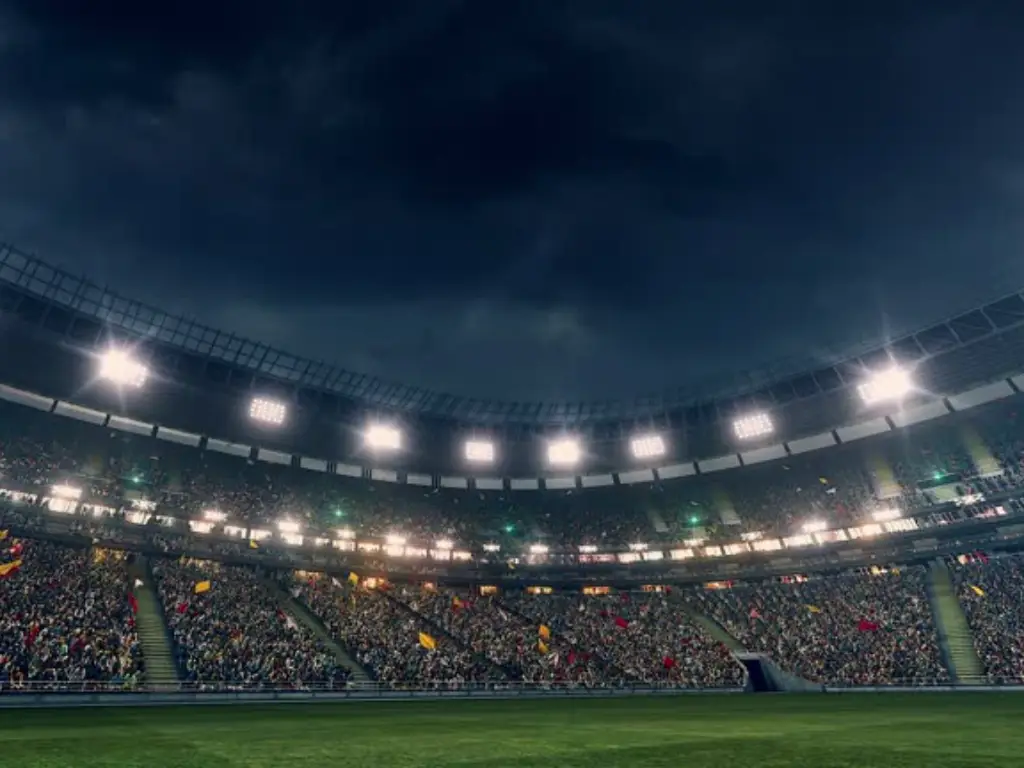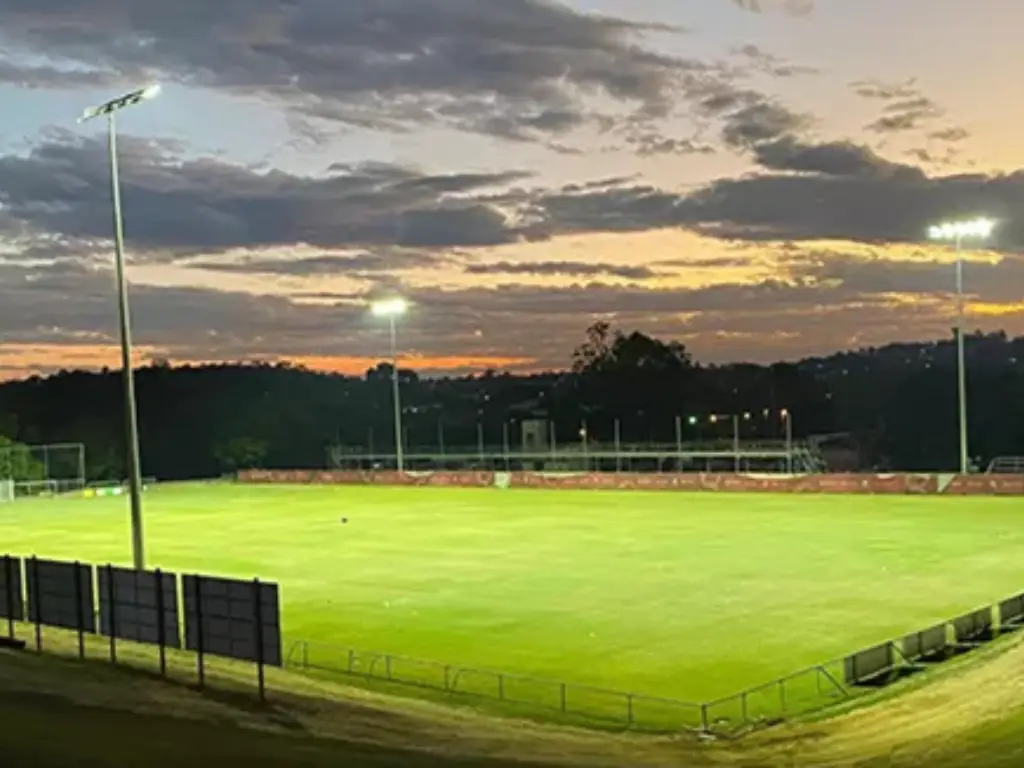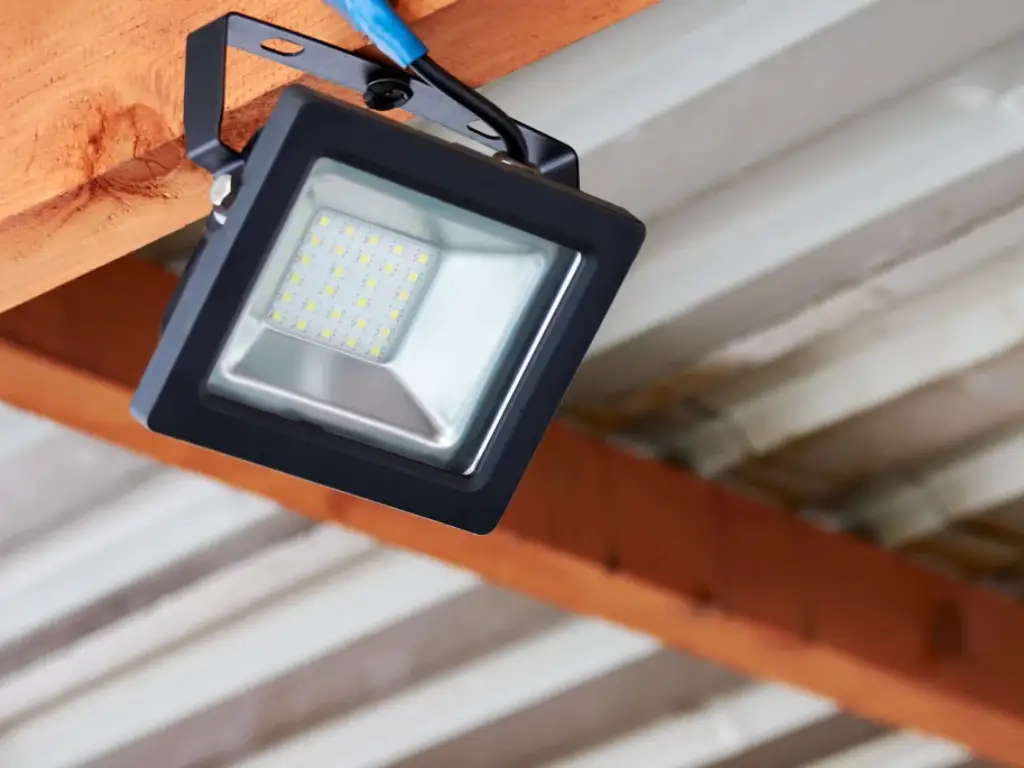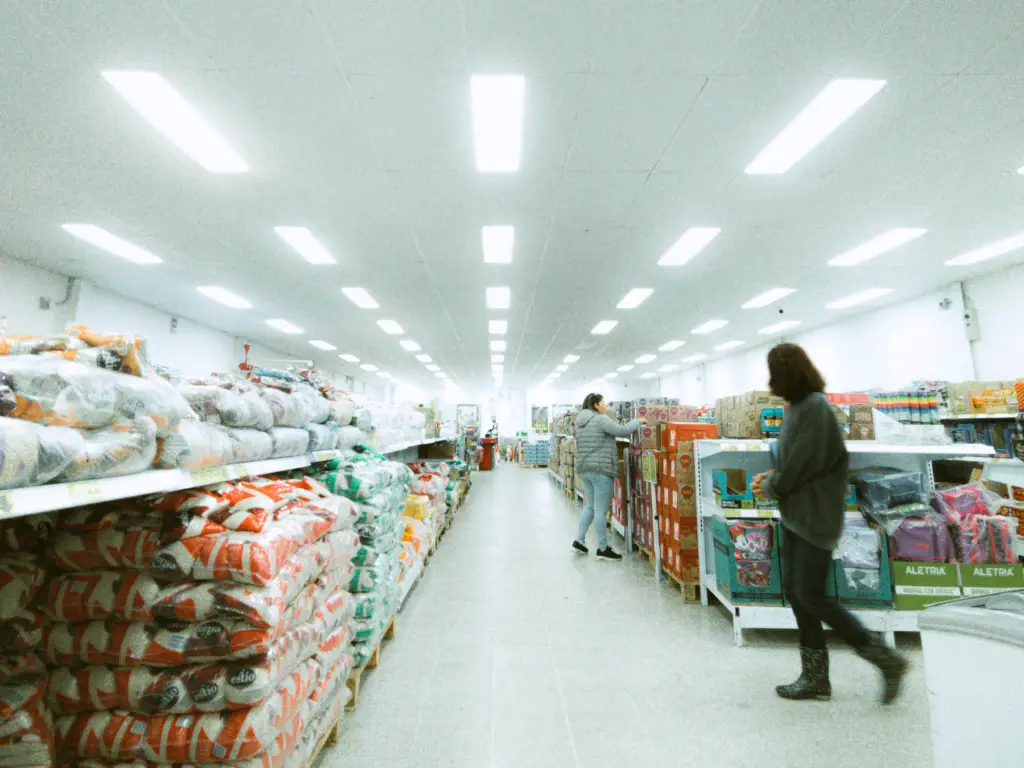Unveiling the Name: More Than Just “Stadium Lights”
Often, the powerful artificial light above is responsible for creating the spectacle of a sporting event, which is enjoyed by the larger populace who support the teams participating in the event and undergo a remarkable transformation for such occasions, culminating in the ‘roar of the crowd’. If you happen to be familiar with the term used to describe those yellowish lights, such as floodlights, which are used to light the sports fields and provide a great and bright light, the answer is most likely and right floodlights. These are high power electric lamps that are used for illumination over a wide area with clear visibility, making it possible to play and watch by the spectator at the stadium. While it is popularly accepted that stadium lights is a term used by people, digging a little deeper shows there is a world of precision and complexities in the terminology used in sports lighting, which is imperative for different types of sports stadiums found around the globe.
What Makes a Light a Floodlight?
First and foremost, a floodlight can best be defined as an artificially created light source with a wide beam spread and great intensity. Unlike spotlights, which emit a narrowly focused beam, floodlights are designed to ‘flood’ areas with light by scattering it over a considerably large area. This wide distribution of light is critically important for illuminating the entire playing area of a stadium, from goal line to goal line on a Football field or the expanse of a Baseball field. The design usually contains a reflector that assists in spreading the light, and the power output is much higher than regular outdoor lighting because it must be high for sufficient illumination across vast areas.
Softer optical equipment is often integrated into modern floodlights to better control light spillage and glare, thereby increasing visibility for players and spectators without discomfort.
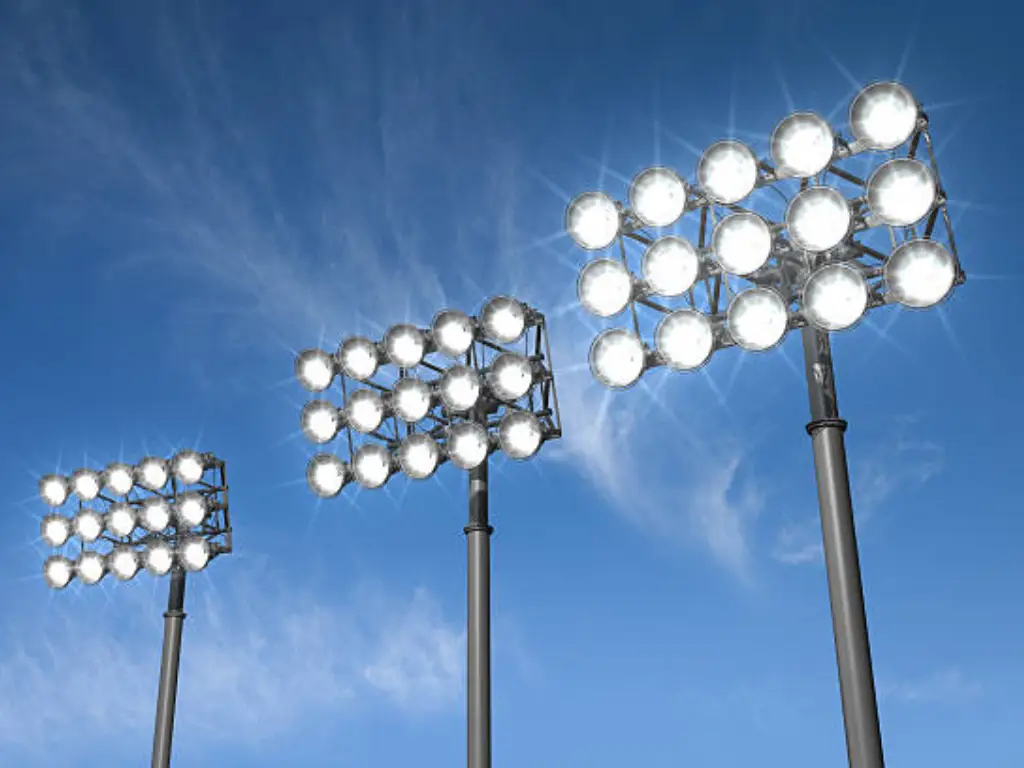
Spotlight vs. Sports Light: Clearing the Confusion
Although floodlights are the core lights used to illuminate the playing field, “spotlight” and “sports light” are terms that you might come across. Sports lights, as was pointed out, are used in the stadiums during player introductions as well as on the scoreboard, and during halftime, they serve more fine-tuned tasks like contoured lighting. “Sports light”, providing precise lighting generic and refers to any apparatus tailored specifically for and utilized in specific areas. “Sports setting, encompassing floodlights as well as spotlights. The performance and effectiveness of these lights have been changed with the use of modern LED technology.
As established, all stadium lights are technically sports lights, while spotlights are used to supplement the main floodlights. Proper design regarding light enables all elements to function and create the needed visibility for both players and fans.
The Technology Behind the Brightness: A Look at Stadium Lighting
The development of stadium lighting design has always been aimed at optimizing energy consumption, increasing light quality, and improving light control. Knowing this technological history makes it easier to understand why modern stadiums mostly use one type of lighting and the particularity of football stadiums which need a tremendous amount of light to adequately shine the expansive playing surfaces.
From HID to LED: The Evolution of Stadium Lights
The use of High-Intensity Discharge (HID) lamps to light up stadiums was almost exclusively done using metal halide and high-pressure sodium lamps. Summit metal halide lamps enjoyed widespread use as they gave off quite bright white light and had fairly good color rendering. This superiority helped players and spectators tell colors and shapes apart easily. High-pressure sodium lamps were better in terms of power consumption than some other types, but their output was an unflattering yellowish light. Such coloration could hardly be noted for sensitivity to intended uses like television broadcasting.
Nonetheless, the use of HID lamps posed various challenges. They often required an extensive warm-up time to achieve optimal brightness, and if power was cut, they had to cool down before being restarted. Besides, they were less durable than contemporary options, with their light emission declining gradually over time. These constraints were most apparent at soccer fields, where lighting needs to be sharp and reliable throughout use. These hurdles eventually led to the use of more sophisticated lighting technology: Light Emitting Diodes (LEDs).
Why LED is the Preferred Choice for Modern Stadiums?
Using LEDs to light up the stadiums is a clear upgrade in terms of functionality, efficiency, and environmental consciousness. This rapid transformation can be attributed to the numerous benefits LED technology provides for stadium construction and retrofit:
- Superior Energy Efficiency: With LEDs, there is no need to worry about brightness because it’s guaranteed to be on par with that of HID lamps. Even so, it consumes much less energy for illumination. Cost savings are estimated to increase by as much as 50 – 70% with retrofit and new construction.
- Enhanced Light Quality: The illumination provided by LEDs is very useful for players, referees, and television cameras, thanks to its uniform color rendering. Furthermore, LEDs offer high levels of color accuracy, which is also important for coloring subdivision.
- Long Lifespan: Enhanced LED Floodlights last significantly longer than HID lamps. While these will only last about ten to twenty thousand hours, enhanced LED floodlights will surpass fifty thousand hours or more with little decay, which reduces stadium maintenance costs.
- Controllability and Flexibility: LED lighting can be dimmed to required levels, raising or lowering the illumination, which makes these systems highly controllable. Furthermore, modern LED controls often feature smart controls for lightshow displays and can be incorporated with other systems throughout the stadium.
- Environmental Friendliness: Unlike HID lamps, LEDs do not have mercury or other dangerous materials. Their energy consumption is also lower. Hence, they have a smaller carbon footprint.
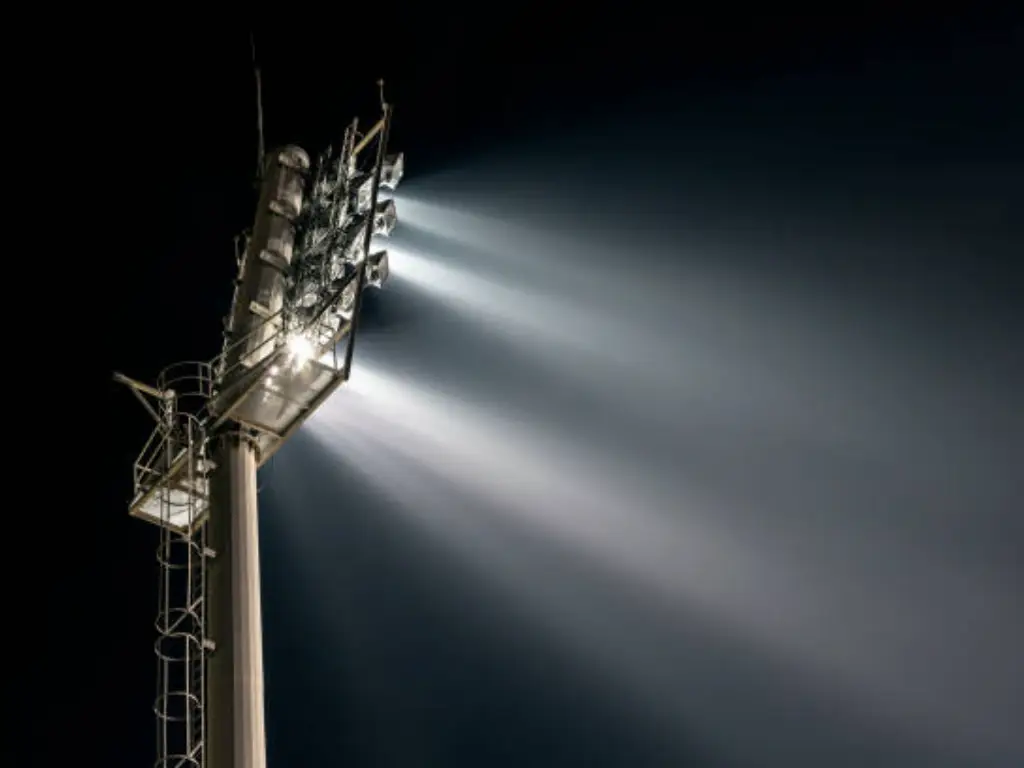
Benefits of Modern Stadium LED Lighting
From the perspective of stadium owners, operators, players, and spectators, the advantages of LED lighting bring tangible benefits.
Enhanced Visibility and Player Performance
Facilitation of detecting the ball, accurate distance reasoning, quick reflex actions, and enhanced visibility at the stadium are symptoms of significant improvement in stadium performance that can only be attributed to LED lights. Enhanced safety at stadiums is also guaranteed. Additionally, superior color rendering allows players to recognize important visual cues such as team marks and other forms.
Energy Efficiency and Cost Savings
Stadium operators benefit from savings in energy costs and spending due to the increased savings LED lighting delivers. For large stadiums, these savings may rise to thousands of dollars throughout the lighting system’s use. Additionally, there are LED stadium lights that are able to function with preexisting solar power systems which further lessens the energy dependency.
Instant On/Off and Controllability
As opposed to HID lamps, which take time to warm up or cool down, LED lights are instantaneous. This is a huge advantage during dynamic halftime shows, sudden power outages, or whenever intricate lighting features are needed.
The capability of instant on and off functions provides more flexibility to do LED lighting control in the case of managing the lighting of the stadium. It permits rapid changes during events and gets rid of the many delays caused by HID lamps. Smart control systems integration, powerful energy optimizing features, and advanced fan interaction schemes enhance the stadium experience. This, along with being able to adjust shift and blend settings effortlessly, makes it simple to optimize energy consumption in real-time.
Matching Lights to Sporting Needs
The basic necessity for almost every stadium remains the same, which is adequate lighting for every sport. However, the specific requirements might differ depending on the sport on the field, and if broadcast live on television.
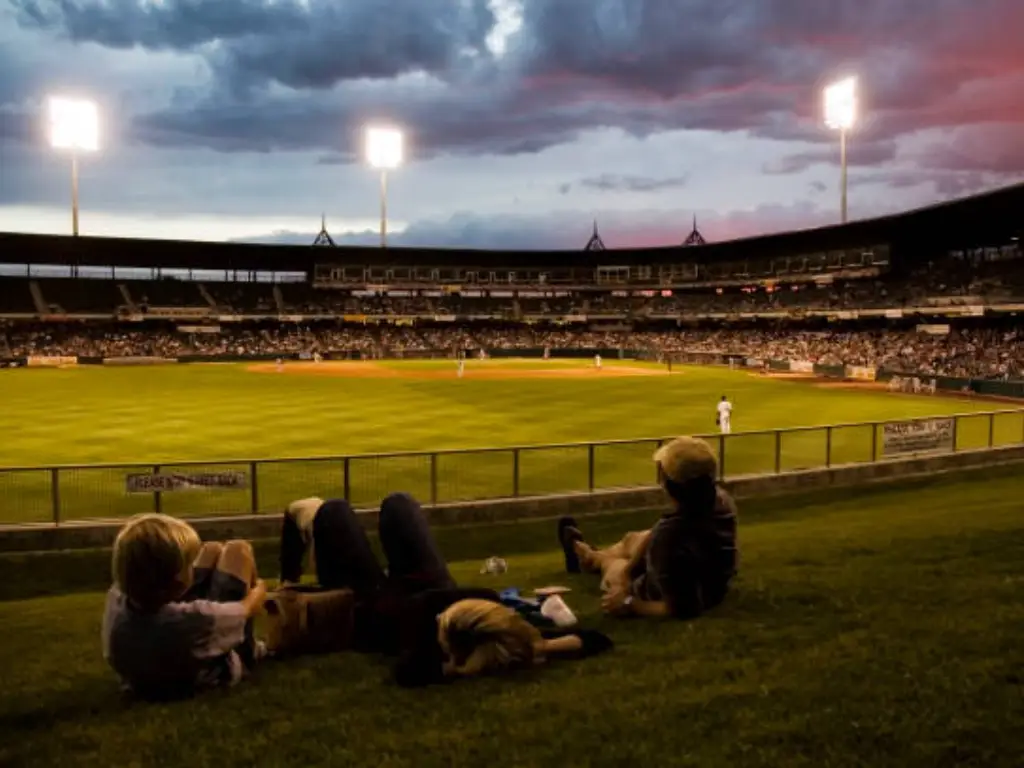
Football vs. Tennis: How Lighting Requirements Differ
The size of the play area, how fast-paced the game is, and the angle at which the ball moves are some of the key factors that determine the lighting requirements for a particular sport. Take, for instance, the case of football; a stadium requires to have complete 360-degree illumination, vertically and horizontally, which is often achieved with stadium lighting systems. This is to enable a player to have a clear vision, whether they are on the ground or the ball is in the air. Moreover, soccer field lighting standards might need to be higher for professional leagues compared to amateur games.
On the other side of the spectrum, these requirements are not as extreme for a tennis court. Even though the brightness levels might be lower than in the football stadium, tennis courts only require illumination to be focused within the court area. However, the absence of shadows and the uniformity of light at all court boundaries is equally important as overall brightness.
The table below shows the recommended average illuminance levels for different types of sports:
| Sport | Recommended Average Illuminance (Lux) |
| Football (Pro) | 1500 – 2000 |
| Football (Amateur) | 500 – 800 |
| Tennis (Club) | 300 – 500 |
| Tennis (Pro) | 800 – 1000 |
| Basketball (Pro) | 1000 – 1500 |
| Baseball (MLB) | 1500 – 2000 (Infield), 1000-1500 (Outfield) |
Broadcast-Ready Lighting for TV Coverage
As for stadiums where events are televised, the lighting needs are even stricter. For the best action to be captured, the television cameras need to be well lit and have high color rendering. Important factors related to broadcast lighting are:
- Color Temperature(CCT): This describes how warm or cool light is. During a broadcast, color temperature between 5000 to 6000 Kelvin, which is daylight white, is preferred to guarantee natural-looking colors captured on the screen.
- Color Rendering Index (CRI): Measures the accuracy of a light source in rendering color as it is seen in natural sunlight. Appropriate for sports broadcasting, a high CRI, ideally 80 or above, is needed to ensure team colors and other features are accurately depicted on television.
- Flicker-Free Operation: Most modern stadium LED lights are designed to be flicker-free, which is very important for slow-motion replays and high frame rate video used during broadcasting. Flickering lights cause distracting artifacts in video footage.
Key Factors When Choosing Stadium Lights
The right choice of a lighting system for a stadium goes beyond just buying equipment. It involves a deep investment that balances sports competition level, broadcasting needs, energy efficiency, budget limits, and ownership costs. It is essential to think about every detail before committing.
Wosen: Your Trusted Partner for High-Quality LED Stadium Lighting
For over three decades now, Wosen has designed and manufactured state-of-the-art outdoor lighting solutions such as stadium flood lights. To ensure a powerful brand presence and compete effectively, Wosen specializes in multifunction LED and solar flood lights and stadium lights that other brands do not focus on. Given the importance of lighting in sports venues, Wosen LED lights are tailored to meet modern market standards.
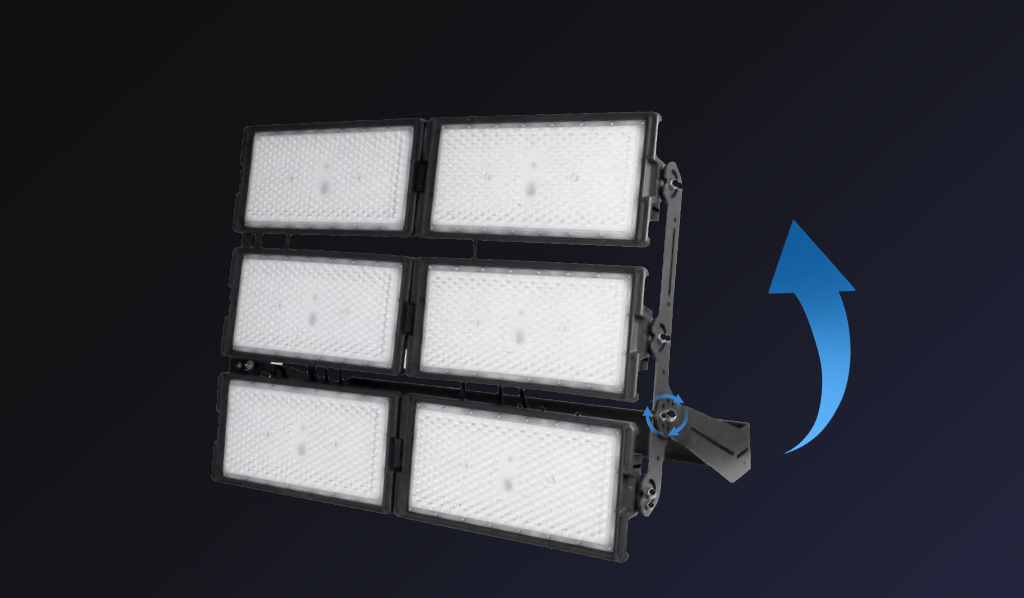
These are some of the best features of Wosen stadium lighting solutions tailored for sporting venues:
- Innovative Designs and Superior Performance: As a step towards enhancing performance for players and the spectator experience, Wosen LED stadium lights utilize advanced technology to deliver uniform illumination and light quality.
- Unwavering Reliability: With an IP66 waterproof rating, Wosen’s stadium lights can withstand extreme external elements. This ensures that durable lights will perform reliably for years to come. Less frequent replacements and maintenance are required, translating to significant savings in expenditure in the long run.
- Long-Term Value: Compared to traditional HID lamps, our LED stadium lights have an enhanced durability of 50,000 hours. Wosens flood lights have adjustable dimmer switches. This increased lifespan lessens the frequent need for additional fixtures and saves a considerable amount in maintenance expenditures.
- Versatility and Adaptability: Tailored towards specific sporting teams and event activities, Wosens flood lights have adjustable beam angles, customizable dimmable switches, and are suitable for training sessions. This further extends the settings and applications scope ranging to professional matches.
- Enhanced Visual Comfort: Wosen’s stadium lights with enhanced anti-glare technology ensure glare-free comfort for fans so that there’s no distraction for players. Incorporating comfort focuses improved safety while heightening spectators’ engagement.
- Smart Control Options: For efficient management of our LED flood lights, Wosen stadium operators can take advantage of RGB, remote, and sensor controls. With programmable control, additional energy savings can be achieved through automation and sculpted LED displays.
Selecting Wosen as your partner in stadium lighting means that you are investing in dependable, high-performance LED systems with unparalleled operational cost savings that augment the value of your venue as well as enhance sustainability.
Conclusion
In conclusion, while the common term “stadium lights” effectively conveys the purpose of these powerful luminaires, the technical name that best describes the primary source of illumination is floodlights. The evolution of stadium lighting technology has led to the dominance of LED lighting and metal halide lights due to their superior energy efficiency, enhanced light quality, long lifespan, and controllability. When selecting stadium lights for large outdoor areas, it’s crucial to consider the specific needs of the sport, broadcasting requirements, and the long-term benefits offered by modern LED solutions. As a trusted manufacturer of high-quality LED outdoor lighting since 1992, Wosen is committed to providing innovative and reliable stadium lighting solutions that illuminate the game and enhance the overall experience for everyone involved.
